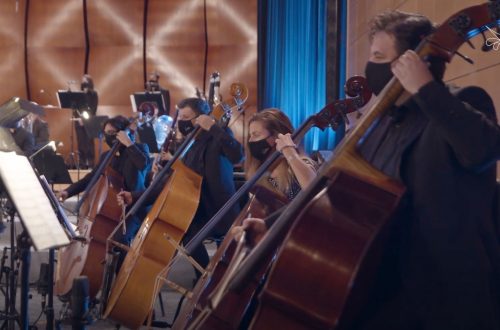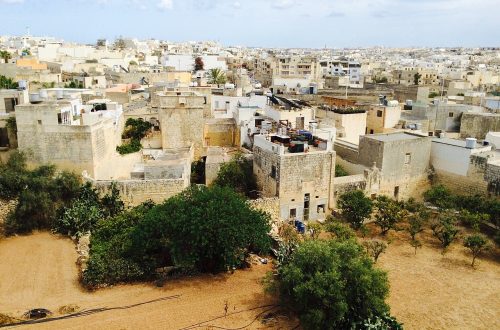
Batman Gżirjan: co-creation in marginalised communities in times of COVID (Gzira, Malta)
Batman Gżirjan was a co-created and community-focused artistic and research project, carried out by the artist Kristina Borg. The setting of the process was the maritime town of Gzira, in Malta. The main aim of the project was to raise awareness within the community of their relation with the heritage surrounding them (and their urban environment in general), through creative means, tackling their memories as well as the current perspective of two groups of local participants. The research workshops evolved in a final co-created performance. The pandemic posed many challenges to the research and performative side of the project.
Background
The project is curated and directed by a local artist and involved at different levels three organisations.
Kristina Borg is a freelance visual and socially engaged artist, a spacemaker and an art educator/lecturer. She holds a Bachelor’s degree in Art Education from the University of Malta (2009) and a Master’s degree in Visual Arts and Curatorial Studies from the Nuova Accademia di Belle Arti, Milan (2015).
Acting on the Margin: Arts as Social Sculpture (AMASS) is an arts-based action research project that aims to create opportunities for people to come together and accompany artists as agents in creative projects and interpretations, through participatory approaches, to generate social impact through policy recommendations. This project has received funding from the European Union’s Horizon 2020 research and innovation programme under grant agreement No 870621 and involves partners from 6 universities from Malta, Czech Republic, Hungary, England, Sweden and Finland and 2 civil society organizations from Portugal and Italy.
Flimkien għal Ambjent Aħjar (FAA) – is a not-for-profit, non-governmental organisation, that lobbies for the preservation of Malta and Gozo architectural and rural heritage as well as to ensure a healthy quality of life.
Inħobbu l-Gżira – A community pressure group that was born specifically as a response to the proposed MIDI masterplan for Manoel Island (Gzira). This masterplan does not consider the needs and amenity of the Gżirjani or of the town itself.
Batman Gżirjan (2021)_documentary from Kristina Borg on Vimeo.
Description
Batman Gżirjan was a socially engaged art-research project stemming from the collaboration of a local artist with a group of locals and fishermen in Gżira – a busy and changing seaside town in central Malta. It examined how the apparently never ending overcontrutions affected inhabitants. The artist and the community employed different creative methods (journal keeping, writing, photovoice, digital means) to document the town’s transformation as experienced through the locals’ senses and through their participation in the project itself. The research workshops evolved into a co-creative community performance piece in public space in Gżira in September 2021.
The documentation process has as much importance as the performance itself, as a support to the narrative of the project.
This project was developed in collaboration with the University of Malta, the NGO Flimkien għal Ambjent Aħjar (FAA) and the community pressure group Inħobbu l-Gżira, as part of the European project Acting on the Margins: Arts as Social Sculpture (AMASS), which was funded by the European Union’s Horizon 2020 research and innovation programme.
The project collaborated with two working groups. The first group of 10 locals from various backgrounds, while the second included 5 retired fishermen. Both groups attended research workshop sessions held once a fortnight. All 15 participants were recruited with the support of the FAA, through open calls on different channels.
The background research and project proposal were written in early 2020, before the COVID-19 crisis. The open call had to be postponed and many adjustments had to be made. This hindered the process. Most people were not comfortable joining in-person workshops. Virtual workshops became the only way forward, although the switch to digital tools meant that not everyone could have had the same type of access. For instance, some of the elderly participants had never used the Zoom software and needed help, or most of the fishermen did not have access to the digital world.
Covid-19 wasn’t part of the plans for this community-based project, but it came to play an important role, as most interactions, research methods and even the performative outcomes had to be re-arranged around this new situation.
Impact
The documentation processes resulted in a mini-documentary and a virtual photo gallery.
The whole project and its documentation were further exploited and disseminated, being Included in the exhibition Documents of Socially Engaged Art at Spazju Kreattiv, Valletta, Malta.
The artist produced an essay which constitutes a chapter in Documents of Socially Engaged Art, a publication by INSEA (The International Society for Education Through Art).
The main result of the project, which aimed at bringing people together (all the more challenging due to COVID) was for sure raising more awareness and empowerment in the community, tackling memories, senses and well-being, in regards the relation with the environment surrounding the use of public heritage made in their locality. This is clearly shown and heard in the documentary.
A possible unexpected outcome of the challenges that the pandemic posed to the project, is the enhancement of a basic IT alphabetization in some of the participants (which can be observed as a general collateral effect of the pandemic over the society).
Interpretation
Tackling a pain point suchs as overconstruction in Malta through creative means, represents already a challenge. Covid 19 acted as a disruptive element in the research method and in the community building process, due to the composition of the creative community (participants). This forced the artist/researcher to create alternative ways to pursue the project’s aims and realisation. The documentation process gives the chance to observe how the researcher had to adapt to the pandemic as a new factor in the research process. In conclusion, this latter element makes the study case more interesting.
References
- https://www.kristinaborg.com/batmangzirjan
- https://www.insea.org/wp-content/uploads/2021/12/DocumentsOfSociallyEngagedArt_web.pdf
- https://www.kreattivita.org/en/event/documents-of-socially-engaged-art/
- https://amassproject.weebly.com/malta.html
- https://timesofmalta.com/articles/view/gzira-from-a-pastoral-haven-to-a-bustling-cosmopolitan-town.901055
- https://newsbook.com.mt/en/batman-gzirjan-art-project-explores-gziras-past-and-present/
- https://theworldnews.net/mt-news/call-for-participants-to-join-in-creative-workshops-performance-art-piece
- Author
Author
Header photograph
Photo: Kristina Borg




